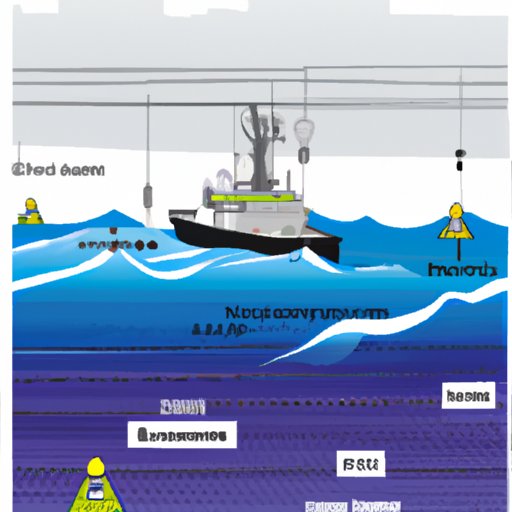Introduction
Running aground is an unfortunate situation that can happen to any boat, regardless of its size or the skill level of its operator. It occurs when a vessel unintentionally touches the bottom of a body of water, most often due to a lack of knowledge about the area’s depths and obstructions. While it can be a frightening experience, it is important to know how to prevent it from happening in the first place.
Check the Depths
The first step to avoiding running aground is to familiarize yourself with the local depths. If you are in unfamiliar waters, you should consult a navigational chart to get an idea of the depths in the area. Pay special attention to any shallow areas and note any potential hazards. If possible, have someone on board who is familiar with the area, as they can provide valuable insight into the depths and other potential dangers.
Monitor Weather Conditions
Weather conditions can have a significant impact on the depth of the water, so it is important to pay attention to forecasts and be prepared to adjust your plans accordingly. For example, if there is a storm coming in, the waves created by the wind could cause the water to become shallower than usual, making it easier to run aground.
Use a Chartplotter
A chartplotter is an invaluable tool for any boater. It provides detailed information about the depths of the water, as well as any potential obstructions and other important data. By having access to this information, you can make informed decisions about where to go and how to avoid running aground.
Utilize Sonar
Sonar is another useful tool for avoiding running aground. It uses sound waves to detect objects that may not be visible to the naked eye, such as rocks, sandbars, and wrecks. By monitoring the sonar readings, you can easily spot any potential hazards and take action to avoid them.
Follow Local Regulations
It is also important to be aware of any local regulations regarding navigation and anchoring. Some areas may have specific rules about where boats are allowed to travel, which can help to prevent running aground. Additionally, it is a good idea to contact the relevant authorities if you need help or advice about navigating safely in the area.
Stay Alert
Finally, it is essential to stay alert while operating a boat. Pay close attention to your surroundings and be ready to take action if any changes are noticed. This could include slowing down, changing course, or even stopping altogether if necessary.
Conclusion
In conclusion, running aground can be a frightening experience, but it doesn’t have to be. By familiarizing yourself with the local depths, monitoring weather conditions, utilizing a chartplotter and sonar, following local regulations, and staying alert, you can greatly reduce the chances of running aground.


